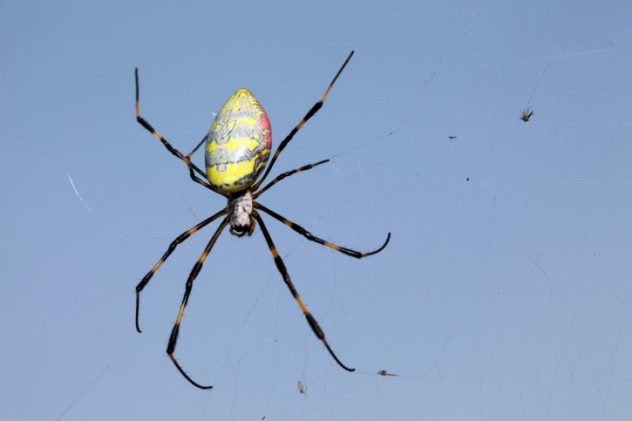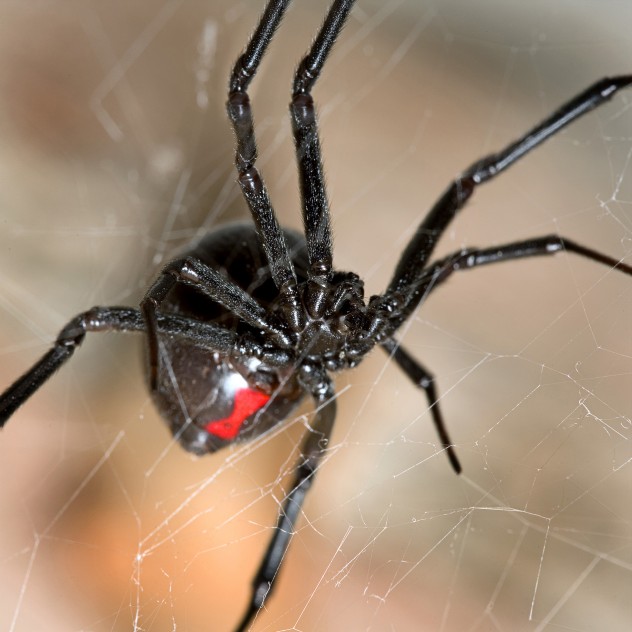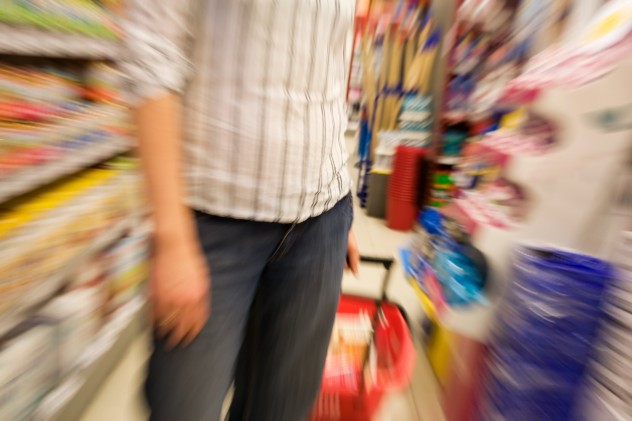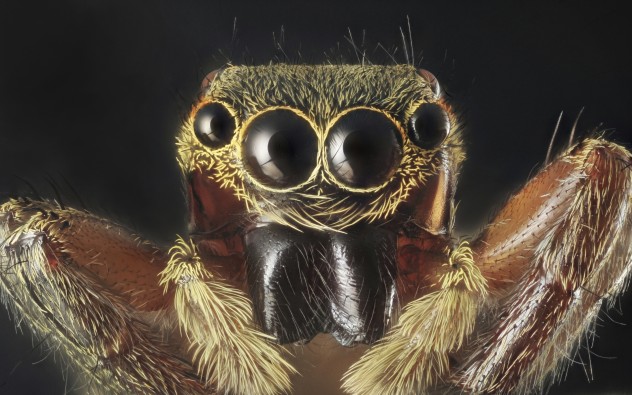 Music
Music  Music
Music  History
History 10 Less Than Jolly Events That Occurred on December 25
 Weird Stuff
Weird Stuff 10 Funny Ways That Researchers Overthink Christmas
 Politics
Politics 10 Political Scandals That Sent Crowds Into the Streets
 Weird Stuff
Weird Stuff Ten Bizarre Facts About The Doge Meme
 Our World
Our World 10 Ways Your Christmas Tree Is More Lit Than You Think
 Movies and TV
Movies and TV The 10 Coolest Stars to Set Sail on The Love Boat
 History
History 10 Things You Didn’t Know About the American National Anthem
 Technology
Technology Top 10 Everyday Tech Buzzwords That Hide a Darker Past
 Humans
Humans 10 Everyday Human Behaviors That Are Actually Survival Instincts
 Music
Music 10 Surprising Origin Stories of Your Favorite Holiday Songs
 History
History 10 Less Than Jolly Events That Occurred on December 25
 Weird Stuff
Weird Stuff 10 Funny Ways That Researchers Overthink Christmas
Who's Behind Listverse?

Jamie Frater
Head Editor
Jamie founded Listverse due to an insatiable desire to share fascinating, obscure, and bizarre facts. He has been a guest speaker on numerous national radio and television stations and is a five time published author.
More About Us Politics
Politics 10 Political Scandals That Sent Crowds Into the Streets
 Weird Stuff
Weird Stuff Ten Bizarre Facts About The Doge Meme
 Our World
Our World 10 Ways Your Christmas Tree Is More Lit Than You Think
 Movies and TV
Movies and TV The 10 Coolest Stars to Set Sail on The Love Boat
 History
History 10 Things You Didn’t Know About the American National Anthem
 Technology
Technology Top 10 Everyday Tech Buzzwords That Hide a Darker Past
 Humans
Humans 10 Everyday Human Behaviors That Are Actually Survival Instincts
10 Scary Spider Stories
Sure, spiders are fascinating. We can all admire their amazing webs, and even arachnophobes appreciate how they keep the mosquitoes under control, but no matter how many times we tell ourselves they’re helpful creatures, deep down we all know that spiders are monsters from Hell. In Western society alone, 55 percent of women and 18 percent of men are terrified of spiders. Even the master of horror, Stephen King, thinks they’re uber-creepy. With arachnophobia so widespread, it’s no surprise the world is full of scary spider stories, both fact and fiction. They show up in ancient mythology, urban legends and newspapers around the world.
10 Raiko And The Tsuchigumo

Spiders appear in ancient legends across the globe from the Navajo myth of Grandmother Spider to West African tales of Anansi, the trickster god. For the most part, the stories are pretty positive, but the Japanese weren’t so fond of our eight-legged friends. Take the Tsuchigumo for example, a nasty arachnid with a thing for human blood. It shows up on scrolls, in plays, and in works of art, and it was usually pitted against Raiko, a fabled samurai from the 10th and 11th centuries.
There are several variations on the Tsuchigumo legend, but according to one tale, Raiko and his retainer were chasing a flying skull (because what else are you going to do with a flying skull?) when they discovered a beautiful woman hiding in a cave. Lust-struck, they followed her deeper into the cavern, and Raiko found himself caught in a web. Realizing it was a trap, the bodyguard snapped out of his spell and lashed out at the woman with his sword. She scurried away, leaving trails of white blood, and when the two samurai found her again, they discovered a giant spider writhing in pain. After the swordsmen chopped her head off, thousands of skulls poured out onto the floor, followed by spiders the size of children. In other tales, Tsuchigumo showed up as a servant boy or a monk, but each time, the samurai squashed it—which is what should happen to all demon spiders.
9Spiders In The Sky

Earlier this year, citizens of Santo Antonio da Platina, Brazil woke to find the sky full of spiders. They covered telephone poles and scurried from wire to wire, forcing all rational people to run for cover. These tiny terrors were members of the species Anelosimus eximus, a rare kind of social spider which congregates in groups up to 50,000 strong, which is too many spiders for any one place. Unfortunately, spider swarms aren’t limited to just one country.
In early 2012, Wagga Wagga, Australia was also the site of a spider invasion. When flooding forced 8,000 people from their homes, it also drove millions of wolf spiders into trees and fields surrounding the town, where they covered everything in sight with spider silk. However, these guys don’t technically spin webs. They’re ballooning—tossing a thread of silk into the air and catching a ride on the breeze. The wind carries them away from the water and towards civilization, much to the dread of Australian arachnophobes.
8The Terrible Toilet Spiders

In 2003, an alarming email began popping up in people’s inboxes, claiming three Floridian women had died mysteriously over a span of five days. All three suffered from high fever and nausea before succumbing to paralysis and death. Despite their similar symptoms, the women were strangers and had nothing in common except for two (creepy) things. They each had high levels of toxicity in their bloodstreams, and all three had eaten at a local Olive Garden.
Quicker than you can say “Acromantula,” investigators shut down the restaurant and inspected the food, beverages, and even AC units but failed to find anything deadly. But when they inspected the restroom, they discovered a little red spider—the two-striped telamonia—lurking in the toilet. Evidently, the spider didn’t like it when people did their business in his home.
Of course, this email was a hoax and had been circulating the Internet since 1999, when a prankster decided to see how gullible people really were. In the original email, the story took place in a fictitious restaurant in an imaginary airport, and the women were victims of a spider called “Arachnius gluteus” which translates roughly into “butt spider.” Over the years, the story evolved, the restaurant turned into Olive Garden, and the spider transformed into the two-striped telamonia, a real arachnid that lives in countries like Singapore and India but isn’t venomous enough to kill a human. However, all you Australians should look out for the infamous redback spider, a deadly arachnid that really does hide in restrooms. Better check the dunny, or you might get bitten in the land down under.
7 The Snake-Eating Spider

Spiders are creepy enough by themselves but throw snakes into the mix, and you’ve got the perfect recipe for a heart attack. If you’re one of those unlucky people who suffer from both arachnophobia and ophidiophobia, you might want to skip this entry for the good of your health. But that wasn’t an option for poor Tania Robertson when she went to work one fateful Tuesday morning in 2004. Tania was just your average receptionist, working at an electrical firm in Bloemfontein, South Africa, and as she parked her car in the company lot that day, she was totally unaware of the Lovecraftian horror awaiting her inside.
As Tania rounded her desk, she came face-to-face with a scene straight out of David Attenborough’s worst nightmares. There was a five-inch Aurora house snake in the corner of her office, hanging limply from the web of a brown button spider. The brown button spider shares an striking resemblance to the black widow (pictured above), and while its bite doesn’t pack quite the same punch, it has enough venom to kill a snake, along with the appetite to eat one. While Tania spent all day Tuesday trying to find someone brave enough to take on Shelob, the spider kept an eye (eyes?) on its kill. As Wednesday rolled around—and Tania still hadn’t found someone willing to risk becoming dessert, the spider got down to business. It spun a web around the snake and began dragging it farther off the ground, all the while pigging out on its legless prey. Fortunately for Tania, she eventually found an arachnologist willing to capture the spider and dispose of the serpent. Hopefully, he also figured out how the snake got in there in the first place.
6 The Pet Tarantula

While most of us prefer dogs or cats, some people enjoy owning tarantulas as pets. Despite their long legs and frightening fangs, these spiders are mostly harmless—mostly. The tarantula has a devious trick up its sleeve, all eight of them, and in 2010, an arachnophile from Leeds found that out the hard way.
The 29-year-old Loiner showed up at his ophthalmologist’s office complaining about his eye. He’d already visited a doctor who’d diagnosed him with pink eye. After three weeks of medication, not only was his eye still inflamed, but now he was overly sensitive to light. The ophthalmologist whipped out his high-magnification lenses and examined the patient’s eyeball, and he found hairs. They’d worked their way through his cornea, into the iris and all the way back to the retina. The doctor asked the man if he knew why he might have hairs stuck in his eyes, and it was then the man remembered he’d been cleaning his pet tarantula’s aquarium when the spider launched a cloud of barbed hairs into his face. These bristles are a common tarantula defense mechanism, and every time the owner blinked, he pushed the hairs further and further into his eye. Fortunately, the doctor prescribed steroids to force the hairs out, and hopefully the man bought himself a pair of safety goggles.
5 False Widow Hysteria

England is under attack from false widow spiders: miniature invaders that creep into homes, crawl into beds, and shut down entire buildings. These spiders are spreading across Britain at an alarming rate, and are some of the most dangerous arachnids on the planet—if the tabloids are to be believed.
The panic started when a London man found fang marks on the back of his hand. Soon after, a footballer awoke to find a hole on his back, where something had bitten him in his sleep. A teenage girl wound up in a hospital, a decorator had to have surgery to save his leg, and an elderly grandfather found himself on the verge of death—all thanks to the false widow scourge. Things got really crazy when the principal of Dean Academy closed and fumigated the school after discovering a spider infestation.
The false widow population is definitely on the rise, probably thanks to climate change. As the earth warms up, the spiders multiply, and encounters are becoming more frequent. But are they really as dangerous as the tabloids say? According to scientists, false widows are pretty timid, and spider bites are less frequent than bee stings. Many “victims” describe symptoms that don’t match up with the widows’ neurotoxin, and some victims are suffering not from the bites themselves, but from bacterial infections inside the wounds. Looks like mistaken identity and mass hysteria are the real culprits here, but you might want to keep a rolled up newspaper handy just in case.
4 Attack Of The Brazilian Wandering Spiders

Imagine you’re eating a banana when suddenly you spot something furry on the fruit. You think it’s mold until it bursts open and hundreds of baby spiders scurry toward your face. It sounds like an urban legend, but it really happened to a Londoner named Consi Taylor. Things got even worse when Consi discovered the spiderlings might’ve been Brazilian wandering spiders. According to Guinness World Records, the Brazilian wandering spider is the most venomous spider on the planet. Just 0.00000021 ounces of the stuff can kill a mouse, and these guys bite multiple times. Fortunately, if the spiders on Consi Taylor’s banana really were wanderers, their jaws would be too small to penetrate human skin. Unfortunately, this isn’t the first time these deadly spiders have hitched a ride in a crate of fruit.
In 2011, a Brazilian wandering spider shut down an entire supermarket in Bexbach, Germany. An employee was unloading a shipment of bananas when he saw something way too big and hairy dart under a shelf. Concerned, the stocker searched for spider images online, trying to identify the mystery creature and found a match: the wandering spider. The store was immediately evacuated, and after police and a spider expert arrived on the scene, 30 nervous people started carefully searching for the spider. They even turned off all the lights in hopes of drawing the night-loving spider out of its hiding place. When that didn’t work, pest control gassed the place, but even then, the spider was nowhere to be found. Exterminators assumed it crawled into a hiding place and died, and the store reopened a few days later. Two years later, there have been no reports of mysterious spider bites in Bexbach, so the wanderer probably didn’t escape. However, there’s always the chance it could happen again. Brazilian wandering spiders have shown up in stores in Manitoba , the Netherlands, and possibly Oklahoma. Whoever’s in charge of checking bananas needs to step up their game.
3 The Nastiest Spider Bite

Here’s an urban legend that’s been making the rounds since the 1960s. A few facts like dates and locations change from time to time, but the basic premise is always the same. And always disgusting.
In 1996, a young English woman took a vacation to sunny Guatemala. Not content spending her days idling on the beach, this gutsy lady armed herself with a machete and set out into the jungle. As she hacked her way through the underbrush, she came across all kinds of creepy crawlies that would send most of us running in terror. So it didn’t really bother her when a spider threaded its way down onto her cheeks and gave her a bite. She just brushed it away and kept exploring.
When she finally flew home, she noticed the spider bite was red, and it was starting to itch like crazy. She tried creams, but the bite grew worse and worse, and soon her whole cheek was a swollen, pulsating cyst. She knew she couldn’t touch it, that she should see a doctor, but the pain was too much so she gave herself a hard scratch. Her nails ripped through the boil, splitting her cheek wide open, and hundreds of baby spiders spilled out, scurrying all over her face.
Obviously, this story is fictitious and plays on our fear of spiders and physical deformities. While there are a few nasty creatures that like to play Alien , there aren’t any spiders that lay eggs in human flesh—not that we know of anyway.
2 The Bite Of The Recluse

While spiders might not be able to impregnate you with their fangs, they can really make a mess of your tan. We’ve all heard of the deadly recluse, one of the most feared spiders on the planet. We all know they’re extremely venomous, but bites are much less common than people think. A Kansas family recently discovered their home was infested with over 2,000 brown recluses, but no one was ever bitten.
Having said that, when recluses do bite, the results can be pretty nasty. A 22-year-old Dutch woman vacationing in Italy woke up one night with a stinging sensation in her ear. Her face began to swell, and her ear slowly turned black. She’d been bitten in her sleep by a Mediterranean recluse spider, a creature whose venom liquefies skin and fat. Since portions were dead, doctors used cartilage from the woman’s ribs to rebuild her rotted ear. In a similar horror story, a 10-year-old Mexican girl was bitten on the leg by a brown recluse, and what started as two puncture wounds decayed into a two-inch lesion of rancid skin and pus, which doctors had to surgically remove. It’s like well-known fantasy author Neil Gaiman says, “There are spiders whose bite can cause the place bitten to rot and to die . . . as to why spiders do this, the answer is simple. It’s because spiders think this is funny, and they don’t want you ever to forget them.”
1 The Monster In The Elevator

It’s Russia, 1990. The police are called to investigate a mysterious death in a bad spot of town. A man was found slumped in an elevator, very much dead with two holes in his neck. The coroner discovers the man died in state of shock, and he’s lost a lot of blood. However, to everyone’s surprise, there’s no bloodstains, no fingerprints, and no signs of forced entry. Things take another bizarre turn when, one month later, a teenage girl is found dead in the same elevator with two identical puncture wounds in her throat, minus a liter or two of blood. People are starting to think there’s a vampire on the loose. What other explanation makes sense?
The police are getting desperate so they stake out the apartment, posting a detective and a sergeant inside the elevator. The men ride the lift up and down for hours and hours, which turn into days and days. On the third day, the elevator suddenly shakes and comes to a halt. The power dies, plunging the men into darkness, which isn’t good news since the sergeant suffers from a mild case of claustrophobia. The two pull out their flashlights, and it’s then they hear the click, click, click on the elevator roof. As their heart rates spike, they realize something big—something alive—is up there, crawling around, and it’s then they see the hole in the roof where a panel has fallen away. The detective shines his light toward the gap and has to fight back sheer terror as he sees a small, hairy head the size of a fist, covered in eight shiny eyes.
The sergeant isn’t quite as calm. Not only does he have claustrophobia, he’s also deathly afraid of spiders. He panics and drops his flashlight, and suddenly the three-foot-long beast springs into the elevator and lands on the sergeant’s face, where it proceeds to sink its jaws into his cheek and suck out blood. The detective is paralyzed for a moment, but then he draws his gun and fires, shooting off one of the spider’s hairy legs. Wounded, the creature rushes past the detective and escapes out the hatch, leaving one more corpse and a traumatized detective. Is the story true? Probably not. But it’s something to think about if you’re ever stuck in an elevator.
Nolan Moore has been freaked out by spiders ever since he saw Arachnophobia as a kid.








